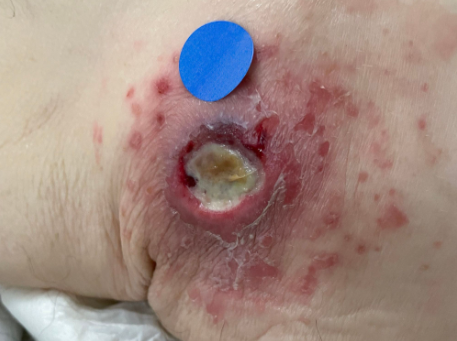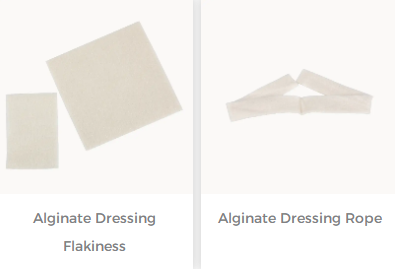wound sinus tract wound care mainly refers to the correct and effective care and management of human wound sinus tract wounds. Many infected wounds will extend through the soft tissue to form a narrow channel, and some wounds will tunnel the wound due to improper dressing, and damage the new granulation tissue due to improper dressing. The wound sinus tract tract is a channel leading to the deep part of the body, often formed by infection or trauma. If the wound sinus tract tract is not properly cared for, it can lead to serious bacterial infections and other complications. Therefore, proper care should be taken to control the wound, prevent infection, and allow for the best possible wound healing in this area.
wound sinus tract Wounds:
Refers to the blind channel that opens to the skin or mucous membrane after deep tissue necrosis, with only one opening, such as the wound sinus tract channel formed by chronic osteomyelitis. This is a disease that can affect the whole body.
How did it form?
The formation of wound sinus tract tracts is mainly related to infection. Wound infections caused by various reasons (such as local wound infection, foreign body retention, poor drainage after incision of abscess, etc., can also be seen in specific infections) have not been treated in a timely and effective manner, under the stimulation of chronic inflammation, abscess or foreign body, the surrounding fibrous connective tissue gradually proliferates and thickens, and finally forms a wound sinus tract tract.
The lumen of the wound sinus tract tract is full of unhealthy granulation tissue, and there may be prominent dark red granulation at the outer opening of the wound sinus tract tract, and a small number of secretions overflows. Sometimes the outer opening of the wound sinus tract tract can also be temporarily closed, but after a period of time, there will be a chronic inflammatory reaction in the wound sinus tract tract, secretions will accumulate, and local redness, swelling, ulceration, and other acute inflammation symptoms will appear. Therefore, if the wound sinus tract tract is not completely removed or foreign bodies or necrotic tissue remain, the wound sinus tract tract will not heal for a long time or recur.
wound sinus tract wound care steps:
1. To clean wound sinus tract wounds: Gently wash the wound with warm water. This can help remove dirt and secretions. Warm water will not overly irritate the wound sinus tract passages and will help relieve wound discomfort. If there is stubborn dirt in the wound sinus tract tract, for simple wound sinus tract tracts with no deep caves, you can scrape the wound sinus tract tract with a curette after local anesthesia to remove foreign matter such as granulation, necrotic tissue, or thread ends, and maintain the wound sinus tract tract. Wound cleansing.
2. Use Alginate Dressing for filling, gently fill the drainage cavity, and change the dressing every day to promote the wound sinus tract to gradually become shallower from the bottom and heal. Advantages of Alginate Dressing Alginate dressing is a new type of dressing whose main ingredient is alginate (Alginate) extracted from seaweed. This kind of dressing has many obvious advantages. Alginate dressing has excellent water absorption performance, which can quickly absorb the excrement in the wound into the dressing, forming a hydrogel state, keeping the wound moist, and promoting healing. Support performance. Alginate dressing has strong reversibility, so the dressing can be shaped in a tortuous way, conforming to different wound shapes, avoiding direct pressure on the wound, and reducing the discomfort of the wound. Antibacterial effect. Because alginate contains many negatively charged groups, it can instantly reduce the uptake and production of bacteria and toxins that form the bacteria and can create an environment conducive to cell growth and healing. biocompatibility. Alginate dressing is made of natural seaweed, without any chemicals and additives, is easy to be accepted by the body, does not irritate the wound, and reduces allergic reactions. It can well meet daily health care and medical needs.
3. Then use Hydrocolloid Dressing to fix the surface of the wound, which can provide the wound with a slightly acidic airtight space that is conducive to wound healing, prevent the invasion of foreign microorganisms, and reduce the chance of wound infection.
4. Appropriate use of drugs Some drugs suitable for wound sinus tract wounds can be used to rule out infection. You should consult your doctor before using the medicine.
5. Use a bandage or brace away from the irritant, and avoid clothing or other objects that rub against or irritate the wound to prevent infection or other complications.
In short, wound sinus tract wound care needs to be meticulous, and various measures need to be taken in the nursing process to achieve the best therapeutic effect. If you think your wound sinus tract wound is showing signs of infection, you need to consult your doctor right away. Proper, timely care and treatment can quickly reduce symptoms and shorten the recovery period.
For more information on Innomed® Alginate Dressing, refer to the previous articles. If you have customized needs, you are welcome to contact us; we will serve you wholeheartedly.
At Longterm Medical, we transform this data by innovating and developing products that make life easier for those who need loving care.
Editor: kiki Jia
Date: March 14, 2023

 English
English عربى
عربى Español
Español русский
русский 中文简体
中文简体








